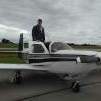Non-turbo M20J at high-elevation airports
-
Members Online
- AviH
- DanM20C
- TangoTango
- ProtoFly
- corn_flake
- Ibra
- Ragsf15e
- Rwsavory
- TravelingIA98
- KSMooniac
- PT20J
- bbingaman
- Dick Denenny
- hammdo
- jetdriven
- Fly Boomer
- Keith20EH
- Jakes Simmons
- DContreras96
- Gmontg02
- raymondscott0321
- 00-Negative
- takair
- GeeBee
- Guillaume
- eman1200
- markm20b
- spistora
- M20E for me
- mluvara
- dc0341
- donkaye
- PeterRus
- Sabremech
- Marc_B


Recommended Posts
Join the conversation
You can post now and register later. If you have an account, sign in now to post with your account.